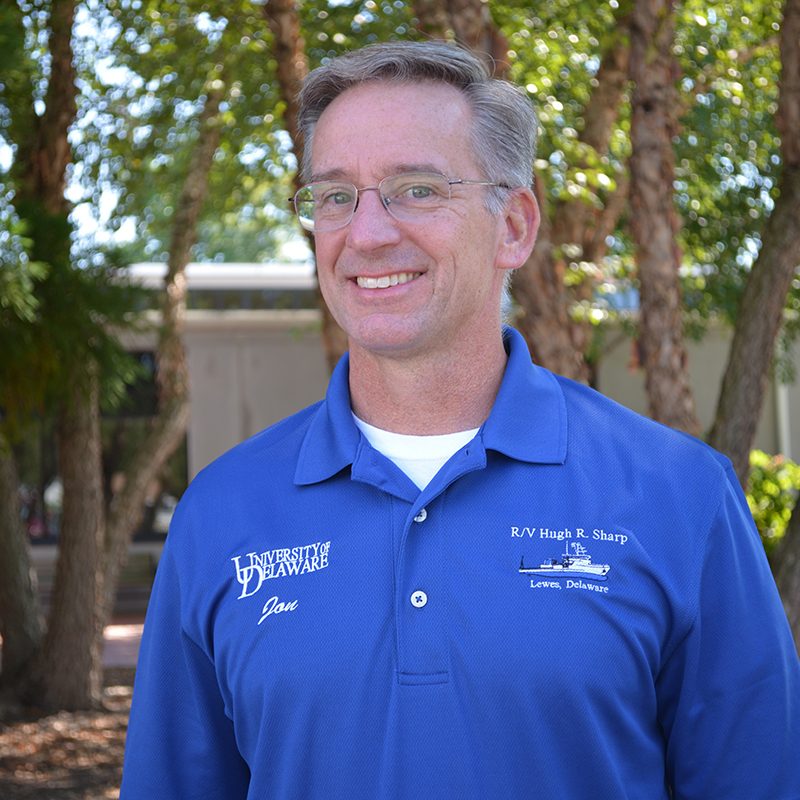

Marine Operations
UD’s College of Earth, Ocean and Environment owns and operates a fleet of research vessels that serve not only university faculty, students and scientists, but also researchers from universities, government agencies and private industry across the country. Contact Director of Marine Operations Jon Swallow for detailed information about the fleet’s capabilities, availability and use.
| Name | Title | Phone | |
Christopher Bogan |
Second Mate, R/V Sharp |
||
Hunter Bunting |
Ship's Steward, R/V Sharp |
||
Huxley Conner |
Second Mate, Small Boat Support |
||
Timothy Deering |
Manager, Oceanographic Svc. |
302-645-4338 |
|
Alex Dominguez |
Marine Oceanographic Tech |
||
Evan Falgowski |
Captain, RV Daiber |
||
Joy Harms |
Business Administrator |
302-645-4292 |
|
John Kenyon |
Captain, R/V Sharp |
||
Christian Kernisan |
Oceanographic Technician |
||
Josef Lachmann |
Maintenance Assistant |
||
Sean McNulty |
Chief Mate, R/V Sharp |
||
Samuel Palmer |
Chief Engineer, R/V Sharp |
||
Spencer Sturla |
Asst. Chief Engineer |
||
Jon Swallow |
Director, Marine Operations |
302-396-8565 |
Regional Class Assets
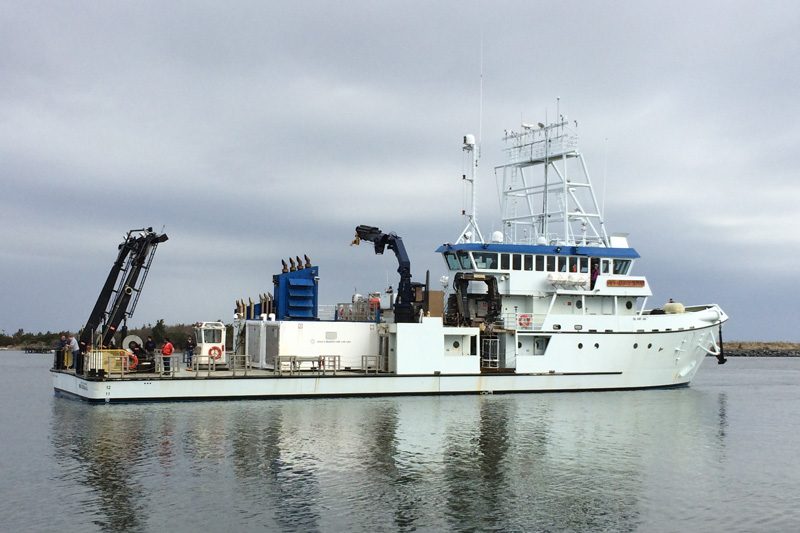
R/V Hugh R. Sharp
The R/V Hugh R. Sharp is a multi-purpose research vessel that operates as a member of the University-National Oceanographic Laboratory System (UNOLS) and U.S. Academic Research Fleet (ARF). The Sharp serves marine scientists as a state-of-the-art platform for exploring and sampling the coastal ocean.
The Sharp supports a wide range of marine disciplines including chemical, geological, physical, and biological sciences, as well as acoustics, fisheries, and marine mammal research. The vessel is a regional asset, serving researchers from federal science agencies and institutions throughout the Mid-Atlantic.
The R/V Sharp was built by Dakota Creek Industries in Anacortes, Wash., and commissioned into service in May 2006. The vessel is named in honor of the late Hugh R. Sharp, who served for many years on the University’s board of trustees and was a staunch supporter of marine research.
The R/V Sharp can carry 14 scientists and has a fuel endurance of approximately 14 days. It typically operates in the coastal waters from Long Island, N.Y., to Cape Hatteras, N.C., as well as Delaware Bay and Chesapeake Bay. Projects occasionally require the vessel to work as far north as the Gulf of Maine, as far south as Florida, and as far offshore as Bermuda.
Operational support for the Hugh R. Sharp is provided primarily by the National Science Foundation (NSF), the Office of Naval Research (ONR), and the National Oceanic and Atmospheric Administration (NOAA).
Cruise Planning Form (PDF) / (Excel)
Equipment List Form (PDF) / (Excel)
Scientific Berthing Plan Form (MS Word)
Medical Profile Form (PDF)
Please do not email this form. The PI will collect paper copies and provide them to the Captain before the ship sails.
Release of Liability Form (PDF)
To be filled out by non-UD or federal employees. It should be signed aboard the ship prior to sailing.
Chemical Hygiene Manual
UNOLS Safety Standards
UNOLS Harassment Prevention Policy (PDF)
UNOLS Shipboard Civility Video — Mandatory viewing by all cruise participants
Pregnancy and Ship Operations
Cruise Planning and Logistics:
Jon Swallow, Director
Cell Phone: 302-396-8565
Email: jswallow@udel.edu
Main Office:
Joyce Harms, Business Administrator
Phone: 302-645-4292
Email: jharms@udel.edu
Cruise Planning and Technical Support:
Timothy Deering
Oceanographic Coordinator
Office Phone: 302-645-4338
Cell Phone: 302-249-6149
Email: deering@udel.edu
Mailing Address:
University of Delaware
Attn: Timothy Deering
R/V HUGH R. SHARP
Marine Operations Building, Room 124
700 Pilottown Road
Lewes, Delaware 19958
Phone: 302-645-4338
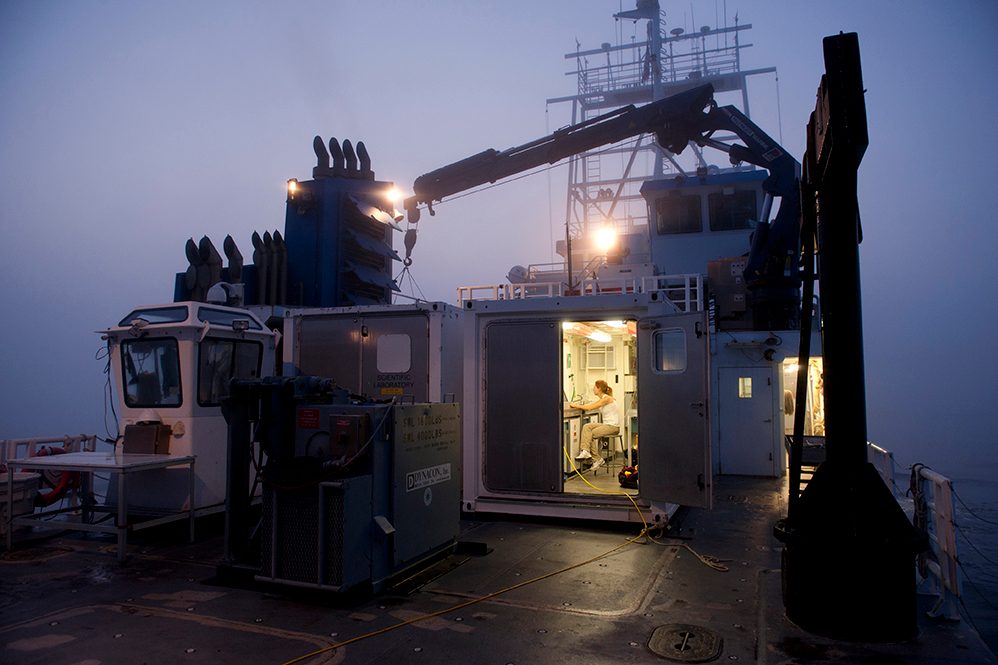
NSF-UNOLS East Coast Van Pool
The Van Pool provides specialized portable laboratories for deployment on Academic Research Fleet Vessels. Funding for operating these shared use facilities is provided by the National Science Foundation and daily usage charges. More information on the types of laboratory vans available and for scheduling can be found on the web page below.
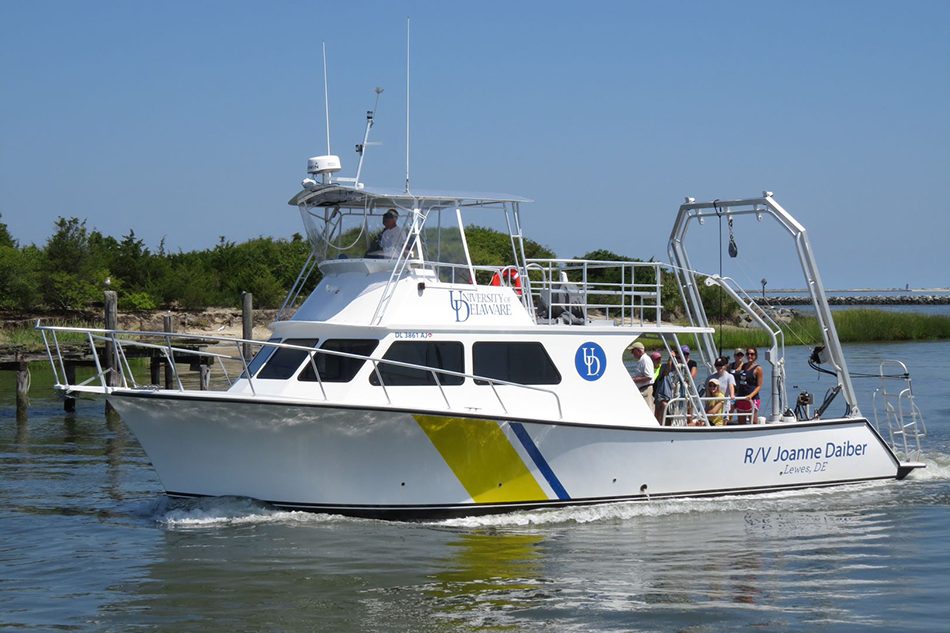
R/V Joanne Daiber
The R/V Joanne Daiber provides an outstanding experiential classroom for students engaged in coastal research as well as state-of-the-art capabilities for faculty research in the Delaware Bay and nearshore. It is a 46-foot research vessel designed to function in a range of habitats from the bay estuaries to the shelf break.
Delivered in June 2014, the R/V Joanne Daiber significantly enhances the University’s capacity to support scientific research, particularly with unmanned vehicles and other state of the art sensor technology. The vessel also provides an outstanding work platform and experiential classroom for students engaged in coastal research.
The R/V Joanne Daiber is named in honor of the late Joanne Daiber, for the devotion she had for the University of Delaware Marine Program, and the professional sacrifices she made along the way. The vessel is used for coastal research as well as undergraduate and graduate instruction
Hull
Manufacturer: Newton Boats
Model: Research 46
Length: 46’
Beam: 16
Draft: 4’
Propulsion: Twin Cummins Diesel QSB 355 HP
Fuel Capacity: 400 gallons
Performance
Cruising speed: 18 knots
Fuel Consumption at Cruising Speed: 1 gallon/mile
Cruising Range: 350 miles with reserve
Maximum Load Capacity: 18 students plus 2 crew
Electronics
Garmin electronics package. 3 Multifunction Displays, 2 on fly bridge and one in main cabin. Depth Sounder, Radar, 2 VHF radios, AIS, Stereo, EPIRB
Mechanical
2,000 pound A frame with winch, 800 pound side davit with winch, 15 KW Kohler generator, air conditioned and heated main cabin, scientific counter space including flow through salt water sink, head with holding tank, fresh water and salt water deck wash downs. Meets USCG safety regulations.
Joanne Elizabeth Currier Daiber was born in Winchester, Massachusetts, in 1927. She received her bachelor of science degree in biology from Bates College in 1949 and completed a master’s degree in biology from Vassar College in 1951. That same year, she was hired by the University of Delaware as its first female marine biologist for the newly formed marine studies program. During her time on the faculty, Daiber performed research on the zooplankton species in the Delaware Bay and assisted the other researchers with their projects.
In 1953, she married fellow faculty member Franklin Daiber, who later went on to become the director of the marine laboratories and chairman of the University President’s Marine Science Coordinating Committee. Due to the policies of the time, married couples were not allowed to work together professionally and Joanne Daiber left the program. However, she continued to support the research occurring in the labs. As the program expanded into a graduate program and eventually its own separate college, she also assisted with graduate housing and editing her husband’s books.
In the 1970s, Joanne Daiber founded the Delaware Nature Society’s guide program. She helped develop educational programs for children from K-12 and their teachers at the Ashland Nature Center. In addition to all of this, she was a member of the Societte Littoral Hortense Horrand and was the acting president of piscatorial adventurers within that organization. She continued helping with her husband’s research as well, until his retirement in 1987.
In 2000, the memoir “Salty Memoirs: Adventures in Marine Science”, written by Franklin and Joanne Daiber, was published by the University of Delaware. That same year, the Joanne Currier Daiber Scholarship was created with the purpose of supporting female graduate students in marine sciences at the College of Marine Sciences at the University of Delaware.
While Joanne Daiber passed away on February 16, 2007, her memory continues at UD with the research vessel named in her honor.
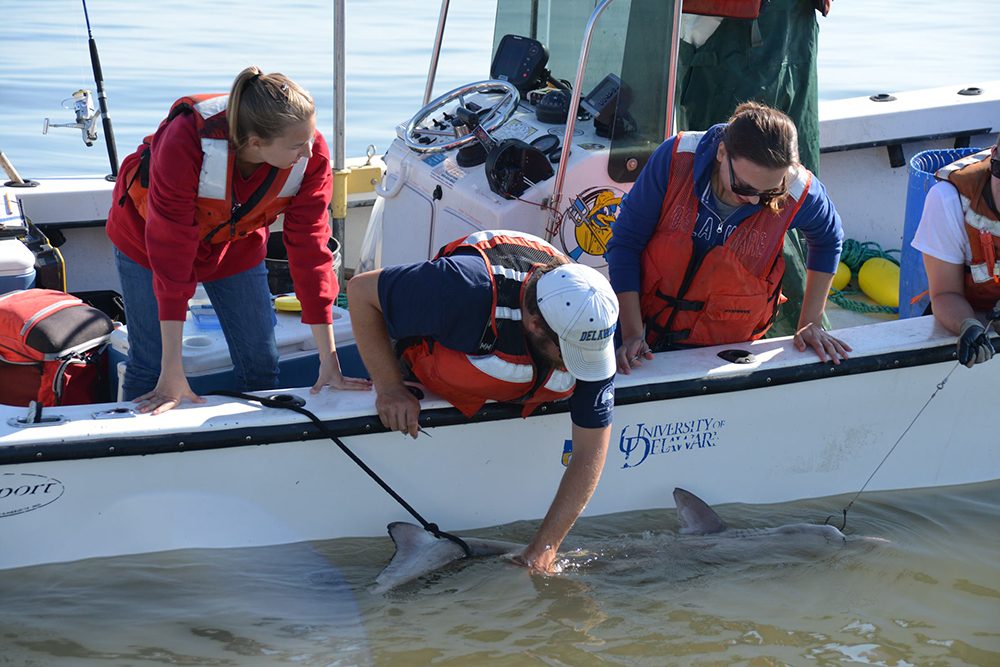
Small Boat Fleet
In addition to the R/V Joanne Daiber, the CEOE fleet includes three small outboard-driven boats. These are docked at the college’s harbor at the Hugh R. Sharp Campus in Lewes and are used for research trips into Delaware Bay and nearby coastal waters. More information about the electronic, mechanical, hull, and performance specifications for each vessel are below:
Hull Performance:
Manufacturer: Boston Whaler
Length:16' 7", Skiff
Beam: 6' 2"
Draft: 20" engine full down
Propulsion: 50 HP Honda 4-stroke outboard, tiller steered, electric start, and power tilt
Performance:
Cruising speed: 15 knots
Fuel consumption at cruising speed: 1.5 gph
Cruising range: Dependent on loading/fuel
Maximum load capacity: 1400 lbs.
Trailerable: Yes (2" ball)
Electronics: VHF compass and digital depth sounder
Hull:
Baysport 1850, center console
Manufacturer: Allen Boat Builders
Length: 18' 6"
Beam: 8' 0"
Draft: 20" engine full down
Propulsion: 115 HP Suzuki 4-stroke outboard
Fuel Capacity: 50 gal
Performance:
Cruising Speed: 20 knots
Fuel Consumption at Cruising Speed: 5.0 gph.
Cruising Range: Dependent on loading/fuel
Maximum Load Capacity: 1400 lbs. / 6 persons
Trailerable: Yes (2" ball), single axel trailer
Electronics: Garmin GPSMAP 441, Humminbird Solix10 MFD with depth sounder, VHF
Hull:
Parker 23 SE, center console
Manufacturer: Parker
Length: 23' 0"
Beam: 8' 6"
Draft: 24" engine full down
Propulsion: 200 HP Yamaha 4-stroke outboard
Fuel Capacity: 110 gal
Performance:
Cruising Speed: 25 knots
Fuel Consumption at Cruising Speed: 3.0 gph.
Cruising Range: Dependent on loading/fuel
Maximum Load Capacity: 2500 lbs. / 10 persons
Trailerable: Yes (2" ball), double axel trailer with brakes
Electronics and misc: Simrad Cruise MFD with depth sounder, VHF, Class A AIS, washdown, live well

